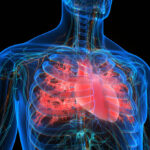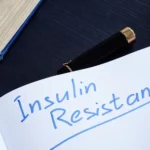- Home
- Who We Are
- Shop
- Products
- GlycoCheck
- The Science
- Study: Improving Aortic Aging with Endocalyx Pro
- Improve Vascular Health with This Supplement
- Promising Supplement for Kidney Health
- Inositol & Insulin Resistance
- PEMF Therapy Benefits
- Maximizing Mediterranean Diet Benefits
- Glycocalyx (eGC): What is Endothelial Glycocalyx?
- 9 Tips for a Healthy Aging Lifestyle
- More Science….
- News & Events
- Join
- Login

HDL cholesterol levels and endothelial glycocalyx integrity in treated hypertensive patients
Abstract
Endothelial dysfunction indicates target organ damage in hypertensive patients. The integrity of endothelial glycocalyx (EG) plays a vital role in vascular permeability, inflammation and elasticity, and finally to cardiovascular disease. The authors aimed to investigate the role of increased HDL cholesterol (HDL‐C) levels, which usually are considered protective against cardiovascular disease, in EG integrity in older hypertensive patients. The authors studied 120 treated hypertensive patients older than 50 years were divided regarding HDL‐C tertiles in group HDLH (HDL‐C ≥ 71 mg/dL, upper HDL‐C tertile) and group HDLL (HDL‐C < 71 mg/dL, two lower HDL‐C tertiles). Increased perfusion boundary region (PBR) of the sublingual arterial microvessels (ranging from 5 to 9 µm) using Sideview Darkfield imaging (Microscan, Glycocheck) was measured as a non‐invasive accurate index of reduced EG thickness. PBR 5‐9 was significantly decreased in group HDLH (P = 0.04). In the whole population, HDL‐C was inversely but moderately related to PBR 5‐9 (r = −0.22, P = 0.01). In a multiple linear regression analysis model, using age, BMI, smoking habit, HDL‐C, LDL‐C, and office SBP, as independent variables, the authors found that BMI (β = 0.25, P = 0.006) independently predicted PBR 5‐9 in the whole population. In older hypertensive patients, HDL‐C ranging between 71 and 101 mg/dL might moderately protect EG and subsequently endothelial function. Future studies in several groups of low‐ or high‐risk hypertensives are needed in order to evaluate the beneficial role of extremely elevated HDL‐C regarding cardiovascular risk evaluation as well as endothelial glycocalyx as a novel index of target organ damage in essential hypertension.
Science Articles
Quick Navigation
Contact Info
NuLife Sciences, Inc.
7407 Ziegler Rd
Chattanooga, TN 37421
(800) 398-9842




